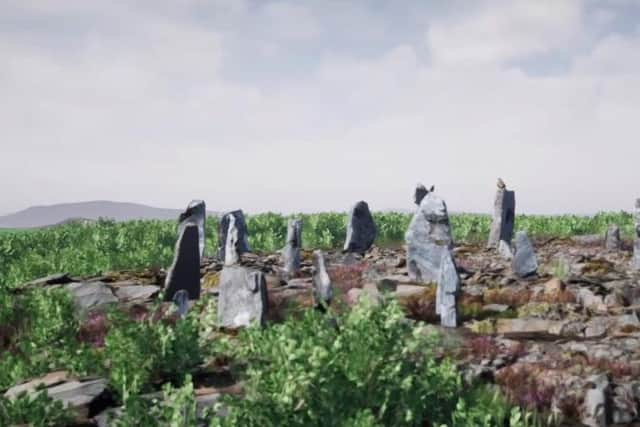Tour a lost stone circle on the Isle of Lewis that has not been seen for 4,000 years
Now, the Na Dromannan stone circle on the Isle of Lewis can be seen for the first time in more than 4,000 years after it was reconstructed in 3D.
The site, which sits close to the famous Calanais Standing Stones, was reconstructed by the Open Virtual Worlds Team at St Andrews University after stones buried in the landscape were mapped and measured.


Advertisement
Hide AdAdvertisement
Hide AdNa Drommannan is one of a number of circles that became submerged in the peats of Lewis over time, experts believe.
Another, as Site XI or Airigh na Beinne Bige, today consists of a single standing stone on an exposed hillside overlooking Calanais.
But a geophysical survey by archaeologist Dr Richard Bates and his team from St Andrews University, revealed that not only was the stone originally part of a circle of standing stones but that the centre had been struck by either a huge bolt or lightning or a number of smaller strikes on the same spot.
Investigations are now set to get underway into other stone circle sites which have become lost to the ground in Lewis.
Historic Environment Scotland has given £19,920 to Urras nan Tursachan, a community-based trust which protects the archaeology of the Outer Hebrides, to extend the research into the island’s hidden Neolithic history.
St Andrews University is to support the project.
The cross-shaped setting of stones at Calanais were put in place around 5,000 years ago.
They predate Stonehenge and were an important place for ritual activity for at least 2,000 years.